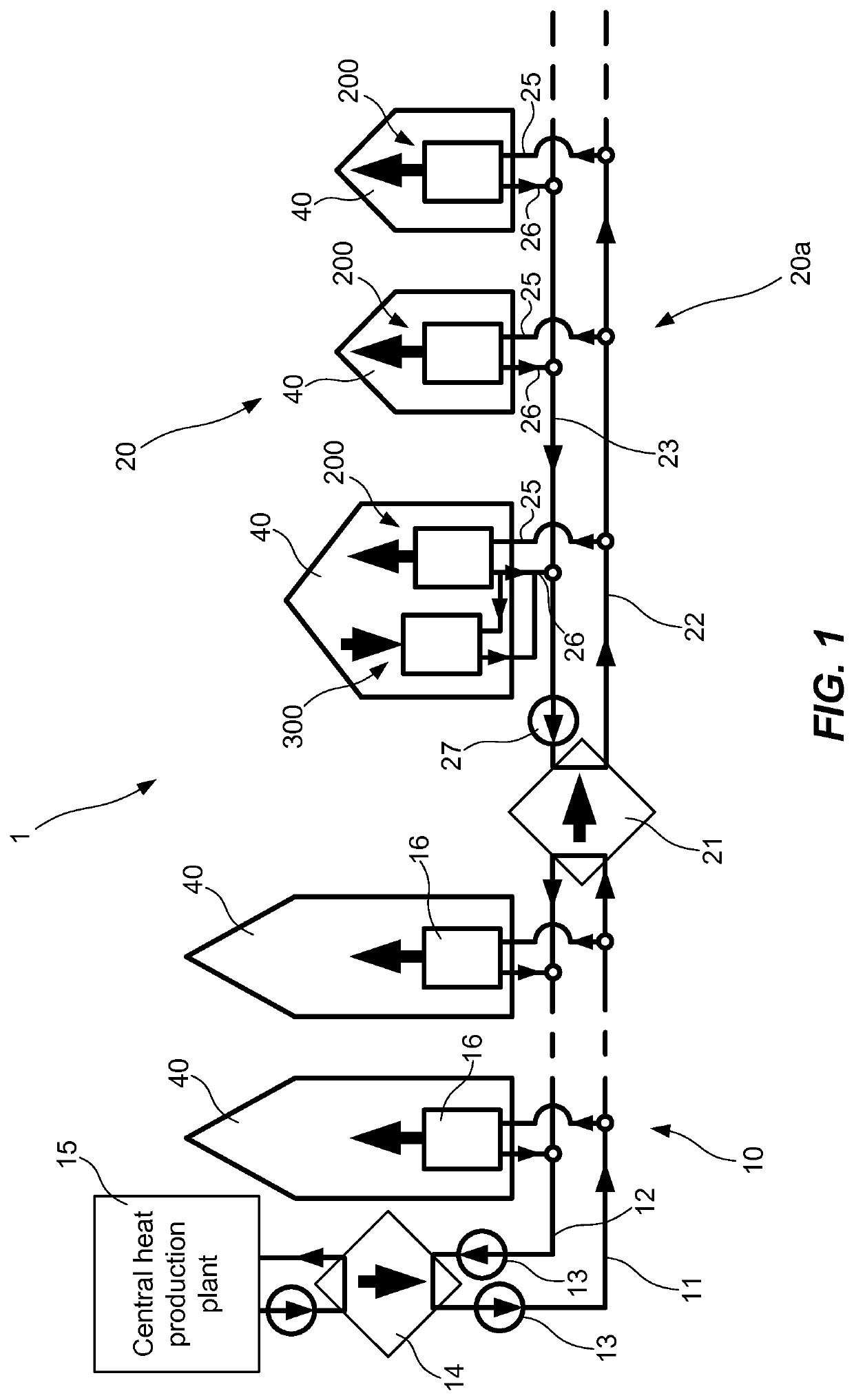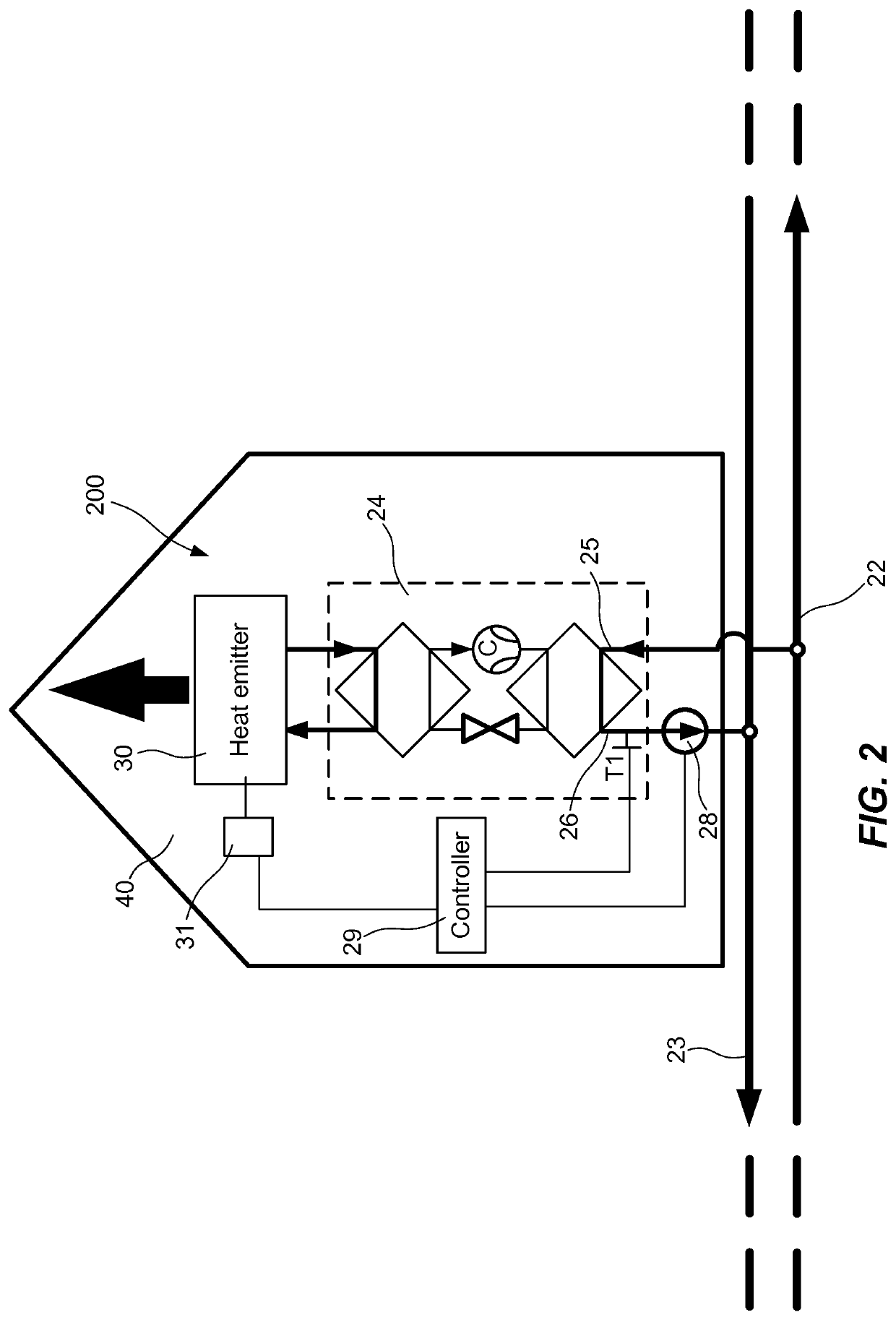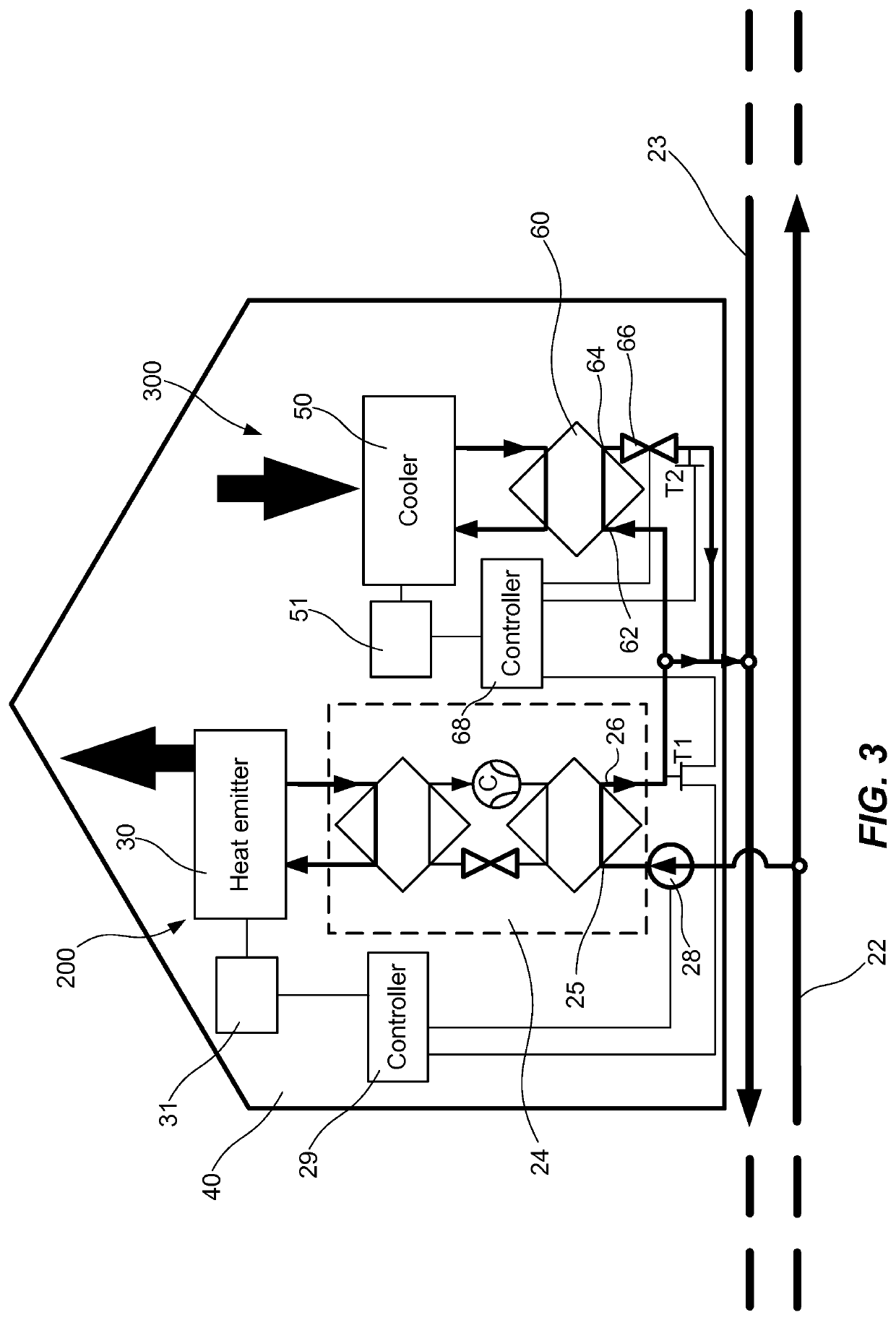Energy distributing system
a technology of energy distribution system and distribution system, which is applied in the direction of combined combustion mitigation, lighting and heating apparatus, heating types, etc., can solve the problems of complex and expensive structural strengthening or expansion of existing district heating grid, and achieve the effects of reducing the heat loss to the surrounding environment, reducing the pumping work, and reducing the cost of construction
- Summary
- Abstract
- Description
- Claims
- Application Information
AI Technical Summary
Benefits of technology
Problems solved by technology
Method used
Image
Examples
Embodiment Construction
[0034]The present invention will now be described more fully hereinafter with reference to the accompanying drawings, in which currently preferred embodiments of the invention are shown. This invention may, however, be embodied in many different forms and should not be construed as limited to the embodiments set forth herein; rather, these embodiments are provided for thoroughness and completeness, and to fully convey the scope of the invention to the skilled person.
[0035]In connection with FIG. 1 an energy distribution system 1 will be discussed. The energy distribution system 1 comprises a district heating grid 10 and a local energy distributing system 20. The local energy distributing system 20 is connected to the district heating grid 10 via a central heat exchanger 21.
[0036]The district heating grid 10 is formed by one or several hydraulic networks configured to deliver district heat transfer fluid to district heating substations 16 which are arranged in buildings 40 such as of...
PUM
 Login to View More
Login to View More Abstract
Description
Claims
Application Information
 Login to View More
Login to View More - R&D
- Intellectual Property
- Life Sciences
- Materials
- Tech Scout
- Unparalleled Data Quality
- Higher Quality Content
- 60% Fewer Hallucinations
Browse by: Latest US Patents, China's latest patents, Technical Efficacy Thesaurus, Application Domain, Technology Topic, Popular Technical Reports.
© 2025 PatSnap. All rights reserved.Legal|Privacy policy|Modern Slavery Act Transparency Statement|Sitemap|About US| Contact US: help@patsnap.com



